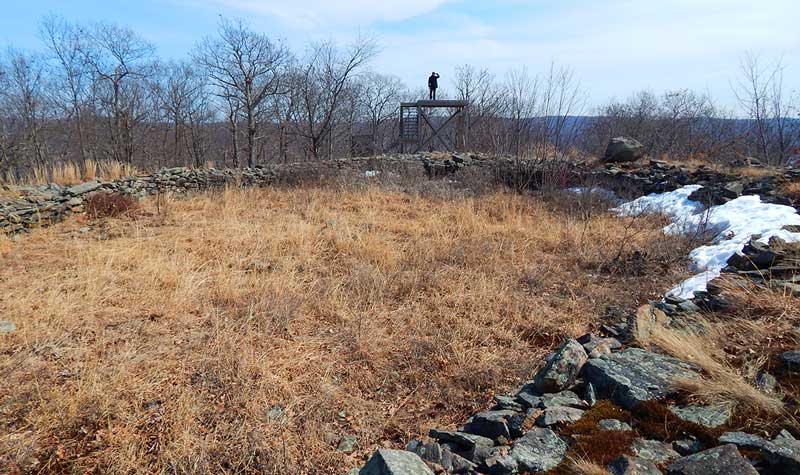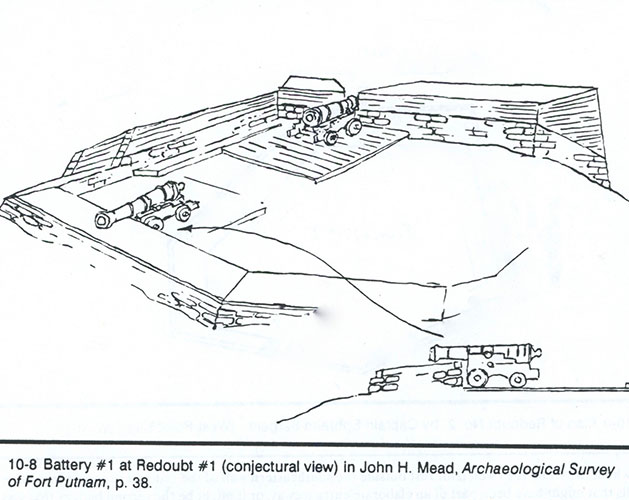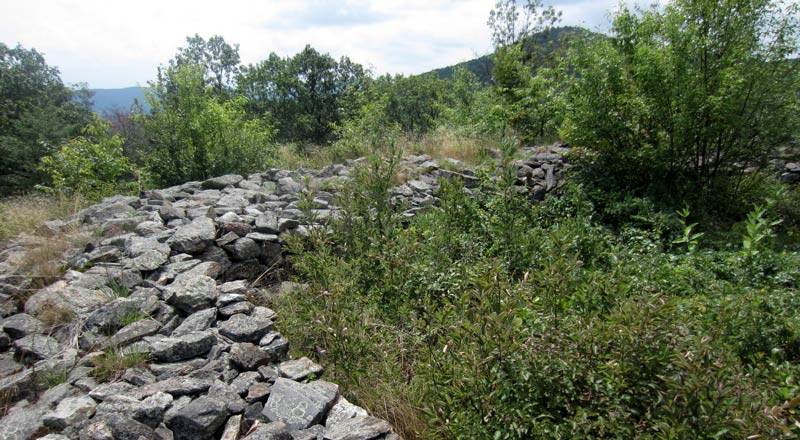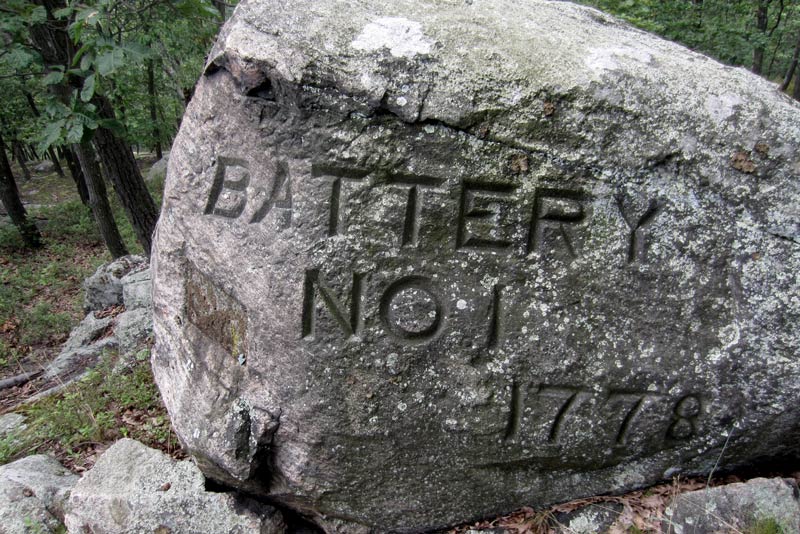Redoubt 1
Significance
Overlooking what is now the town of Highland Falls and shaped like an irregular hexagon, Redoubt 1 was part of a series of four redoubts (1, 2, 3, 4) built to protect Fort Putnam from troops coming from the west and southwest and attacking Fortress West Point from the high ground. Possible attack could also come from the road to the south. These four redoubts were quickly constructed beginning in July 1779, after the British had taken Stony Point. All of the guns in Redoubt 1 were in the external battery, remnants of which still exist today.

These four redoubts were quickly constructed beginning in July 1779, after the British had taken Stony Point. According to the authors of “Highlands Fortress,” “After the British had seized Stony Point, McDougall dispatched the two Carolina Regiments and the militia of Westchester County to West Point. By the 4th of June, the militia was deployed on the major roads into West Point and the Light Infantry had posted itself in the hills about two miles from the post.“
The strength of the garrison was about 2300. Washington felt certain that West Point was the British goal. On the 4th he sent an explicit massage to McDougall, ‘I am determined at the utmost to support the fort and I expect it will hold out to the last extremity.’ He also directed that ‘no part of the garrison ought to be militia.’ Perhaps the severity of his orders cautioned the use of the better trained, disciplined, and experienced Continentals to hold such an important post under such hazardous conditions, particularly when the fate of the nation hung in the balance. Meanwhile, General Parsons who was again at West Point reported, “The garrison are in high spirits and are very desirous of receiving the enemy’s attack.”


Redoubts 1,2,3, and 4 were part of the integrated plan to protect West Point from a British invasion by land from the high ground. The “Division Commanders were to maneuver their Continental army units so that the British would be prevented from ‘taking possession of the heights back of our works on Stony [Rocky] Hill and Fort Putnam.’ The mobile army, the local militia, and the static fortifications at West Point all functioned as an integrated whole to achieve one common purpose, to keep the Hudson closed to the British.” Highlands Fortress, p144.


